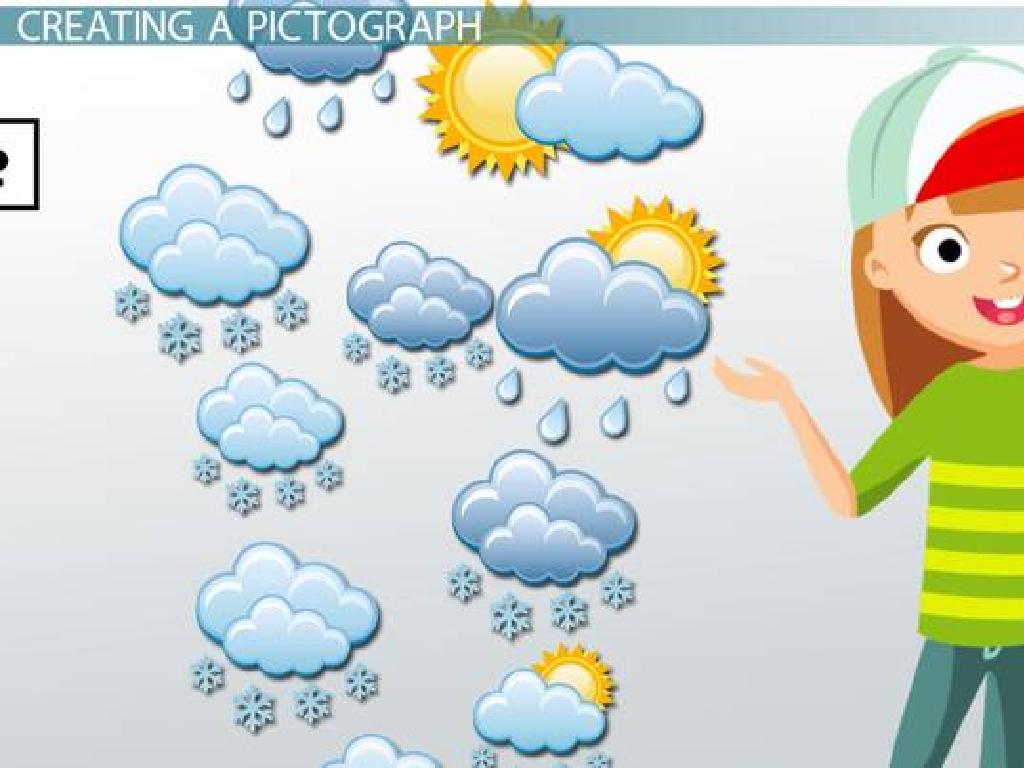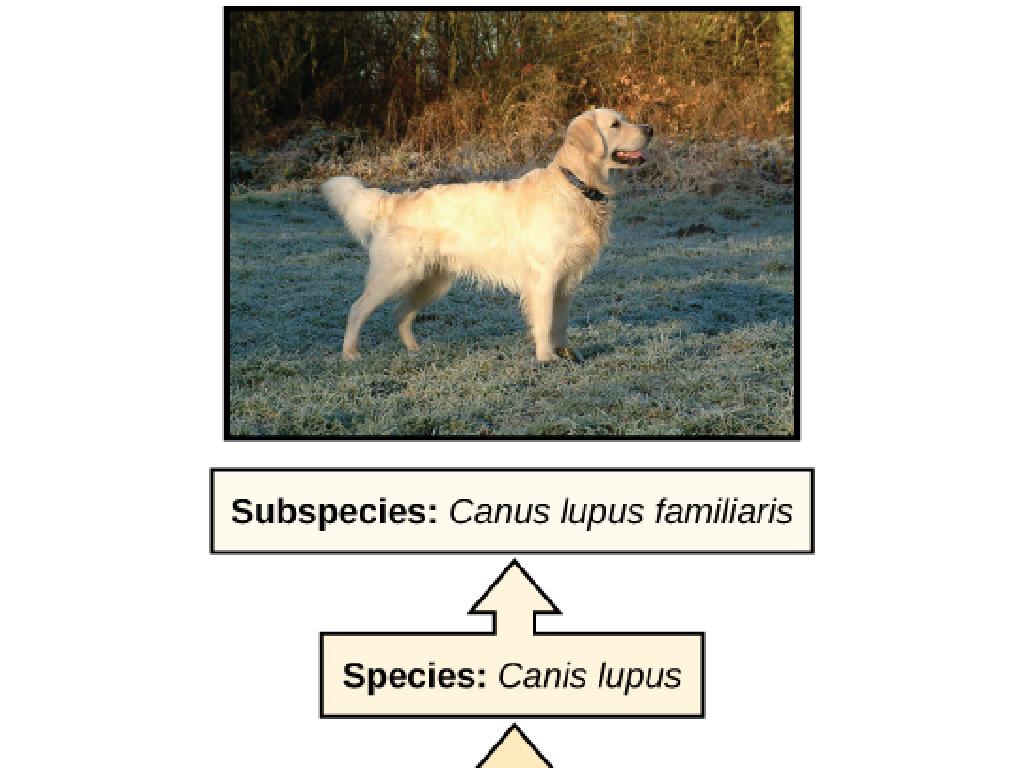Weather Or Climate? Cite Text
Subject: Science
Grade: Sixth grade
Topic: Weather And Climate
Please LOG IN to download the presentation. Access is available to registered users only.
View More Content
Welcome to Weather and Climate!
– Exploring our atmosphere
– Our atmosphere is a layer of gases surrounding Earth.
– Defining weather
– Weather is the day-to-day state of the atmosphere.
– Understanding climate
– Climate describes the average weather conditions over a long period.
– Weather vs. Climate
– Weather is short term, climate is long term.
|
This slide introduces students to the foundational concepts of weather and climate, which are often confused. Begin by explaining the atmosphere as the protective layer that hosts weather events. Weather refers to short-term changes in the atmosphere, including temperature, humidity, precipitation, and wind that we experience daily. Climate, on the other hand, is the average of these weather conditions over a longer period, typically 30 years or more, in a specific area. Emphasize the difference between weather and climate by providing examples, such as a rainy day (weather) versus the rainy season (climate). Encourage students to think of their own examples and to consider how weather and climate affect their daily lives and the environment.
Understanding Weather
– Weather: day-to-day atmosphere
– Includes temperature, humidity
– Precipitation, wind, and visibility also key factors
– Weather changes quickly
– Can vary greatly over short periods
– Specific to local areas
– Affects only a specific region at a time
|
This slide introduces the concept of weather as part of the larger topic of Weather and Climate. Weather is described as the short-term conditions of the atmosphere that we experience daily. It encompasses various elements such as temperature, humidity, precipitation, wind, and visibility. Emphasize that weather is not constant; it can change within minutes or hours and is not the same everywhere it’s localized. Use examples like a sudden rain shower or a clear sunny day turning cloudy to illustrate the rapid changes in weather. Discuss how weather can be different in various parts of the same city or region. This will help students understand the dynamic nature of weather and its impact on their daily lives.
Understanding Climate
– Climate vs. Weather
– Climate is the average weather over time, unlike daily weather changes.
– Analyzing weather patterns
– Scientists look at weather data over many years to understand climate.
– Climate zones explained
– Earth has various climate zones like tropical, arid, and polar regions.
– Examples of climate zones
– Tropical zones are warm, arid zones are dry, and polar zones are cold.
|
This slide aims to clarify the concept of climate as distinct from daily weather fluctuations. Climate is the average of weather conditions over a long period, typically 30 years or more, which helps scientists predict future weather patterns. Understanding climate zones is crucial for studying ecosystems and how living organisms adapt to their environments. Examples of climate zones include the consistently warm tropical zones near the equator, dry arid zones such as deserts, temperate zones with seasonal changes, and cold polar zones at the Earth’s extremes. Encourage students to think about the climate zone they live in and how it affects their daily life.
Comparing Weather and Climate
– Weather: short-term changes
– Weather fluctuates day-to-day, like rain or sunshine
– Climate: long-term patterns
– Climate is the average weather over years in a region
– Daily weather informs clothing
– Choose an outfit based on today’s forecast
– Climate dictates wardrobe choices
– Knowing your climate helps you plan what clothes you might need overall
|
This slide aims to help students differentiate between weather and climate. Weather refers to the atmospheric conditions that occur locally over short periods, such as hours or days. Climate, on the other hand, is the average of weather over a longer period, typically years, in a specific area. To make it relatable, compare the daily weather to deciding what to wear on a particular day, while climate is like considering the range of clothes you keep in your wardrobe for different seasons. Use examples like a single snowy day representing weather, and the average snowfall a region gets each winter representing climate. Encourage students to think of their own examples of weather and climate from their experiences.
Reading and Citing Weather & Climate Data
– How to read weather data
– Learn to interpret temperature, precipitation, and wind speed.
– Understanding weather maps
– Analyze symbols and patterns to forecast weather.
– Interpreting climate graphs
– Compare long-term trends in temperature and rainfall.
– Citing scientific texts
– Practice referencing sources for data and conclusions.
|
This slide aims to equip students with the skills to read and understand weather and climate data. Start by explaining how to interpret basic weather data such as temperature, precipitation, and wind speed. Move on to weather maps, discussing the importance of symbols like isobars and weather fronts. For climate graphs, focus on how they show long-term trends and differences between seasons. Emphasize the importance of citing sources when using data from scientific texts, which reinforces good research practices and academic honesty. Provide examples of proper citation formats and encourage students to cite their sources when presenting their findings.
Class Activity: Weather or Climate?
– Determine: Weather or Climate scenario
– Work in pairs for discussion
– Cite reasons for your choices
– Use text evidence to support your decision
– Present findings to the class
|
This interactive class activity is designed to help students differentiate between weather and climate. Weather refers to short-term atmospheric conditions while climate describes the long-term patterns in a particular area. Students will work in pairs to analyze various scenarios and decide whether they describe weather or climate, citing reasons for their answers. Encourage them to use specific evidence from the text or their own knowledge. After the discussion, each pair will present their findings to the class, fostering public speaking skills and peer learning. Possible scenarios for the activity could include: ‘It rained for three days straight’ (weather) or ‘Summers here are usually hot and dry’ (climate).
Weather vs. Climate: Summary and Importance
– Recap: Weather vs. Climate
– Weather is day-to-day, climate is long-term patterns.
– Significance in science and life
– Knowing this helps predict events and prepare for impacts.
– Review assigned materials
– Engage with daily weather/climate
– Observe how weather changes and relates to climate in your area.
|
This slide aims to consolidate the students’ understanding of the differences between weather and climate. Weather refers to short-term atmospheric conditions while climate describes the average weather patterns over a longer period. Understanding these concepts is crucial for scientists to predict weather events and for individuals to make informed daily decisions. Encourage students to complete any assigned reading or worksheets to reinforce their learning. Additionally, motivate them to observe and reflect on how the daily weather they experience fits into the broader context of climate patterns.
Homework: Weather Report vs. Climate Graph
– Find a local weather report
– Locate a climate graph
– Write a paragraph on each
– Describe the report and graph, focusing on their features and information they provide.
– Explain differences in class
– How do daily weather conditions contrast with long-term climate patterns?
|
This homework assignment is designed to help students understand the difference between weather and climate. Weather is the day-to-day state of the atmosphere in a region, while climate is the average weather conditions in a region over a long period. By analyzing a weather report, students will look at short-term forecasts, temperature, precipitation, and wind. In contrast, a climate graph shows long-term trends, such as average temperatures and rainfall over the year. Encourage students to think critically about the differences and be ready to discuss how daily weather can vary while the climate remains relatively constant. This will prepare them for a deeper discussion in the next class.





